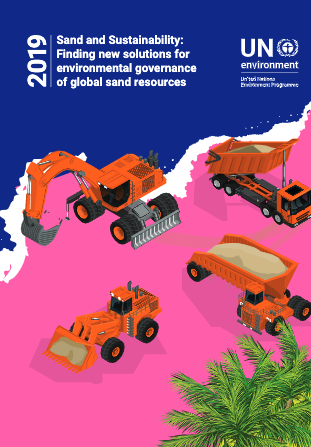Chemycal has been acquired by 3E
Learn MoreChemycal has been acquired by 3E
Learn MoreDiscover how Chemycal PRO helps you boosting your regulatory monitoring:

Geneva, 07 May 2019 – With the global demand for sand and gravel standing at 40 to 50 billion tonnes per year, a new report by UN Environment reveals that aggregate extraction in rivers has led to pollution, flooding, lowering of water aquifers and worsening drought occurrence.
The report Sand and sustainability: Finding new solutions for environmental governance of global sand resources presents how shifting consumption patterns, growing populations, increasing urbanization and infrastructure development have increased demand for sand three-fold over the last two decades. Further to this, damming and extraction have reduced sediment delivery from rivers to many coastal areas, leading to reduced deposits in river deltas and accelerated beach erosion.
“We are spending our sand ‘budget’ faster than we can produce it responsibly. By improving the governance of global sand resources, we can better manage this critical resource sustainably and truly demonstrate that infrastructure and nature can go hand in hand,” said Joyce Msuya, Acting Executive Director of UN Environment.
According to the report, sand and gravel resources are the second-largest resource extracted and traded by volume after water. With sand extraction regulated differently around the world, important regions for biodiversity and ecosystems are made more vulnerable by challenges in the local implementation of these regulations. A growing trend of unsustainable and illegal extraction in marine, coastal and freshwater ecosystems makes this a sustainability challenge with a display of the various extraction impacts on terrestrial, riverine and marine environments.
Sand extraction is fast becoming a transboundary issue due to sand extraction bans, international sourcing of sand for land reclamation projects and impacts of uncontrolled sand extraction beyond national borders. International trade in sand and gravel is growing due to high demand in regions without local sand and gravel resources and is forecast to rise 5.5 per cent a year with urbanization and infrastructure development trends.
CONTINUE READING ON www.unenvironment.org
2013 © MyChemicalMonitoring. ALL Rights Reserved. About Us | Terms and Conditions